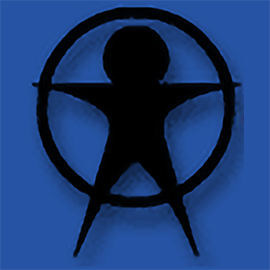Boracay
Boracay
Telling it as it is: History and Origin
Malay[1], Aklan, Philippines
The Republic of the Philippines, to give it its official title, is made up of 7,107 islands, although the majority of its almost 98 million population lives on just 11 of those islands. The country is divided into the three main geographical divisions of Luzon, Visayas and Mindanao.
The Luzon group of islands includes Luzon itself, the largest island and home to the capital city, Manila. The next largest island is Mindanao, which lends its name to the group of islands also including the Sulu Archipelago. The Visayas division is a group of several small islands including Panay[2], Bohol and Negros.
In Panay is the famous Boracay Island[3]. Boracay Island is located off the northwest corner of Panay in Region VI of the Philippines. The island is approximately seven kilometers long, dog-bone shaped with the narrowest spot being less than one kilometer wide, and has a total land area of 10.32 square kilometers. The name Boracay has various rumoured origins[4]. One of which was that it is drived from the local word of borac or sagay which means cotton in reference to the white cotton like colour and texture of Boracays sand.
The Native Islanders and Ati lived together in harmony in the island. The Ati are the indiginous people[5] of Boracay, being the first settlers and were farmers and fishermen.
Fishing , Copra and Tobacco (first class products believed to have been introduced and propagated by the Greener of Boracay[6]. Dona Sofing[7] and traded on the nearby mainland of Aklan ) were the main trades of the island. It was only in the late 70's when the main income of the island changed to tourism when tourists started to arrive.
It is often told that Boracay Beach has a shaded and uncertain past[8][9]. This is because the island in the early 1900's was just one private[10] home of the Ati, the islanders and a couple belonging to one of the prominent families in Aklan. They were considered to be the original settlers of the island[11].
It all began when Lamberto H. Tirol[12][13] and Sofia Ner Gonzales[14][15] settled in the island. They lived among the islanders. There weren't too many people that time so that life was simple. As fishing was the main livelihood, the couple began to cultivate the land, planted millions of trees and plants. Even upon the demise of Don Lamberto H. Tirol, cultivation continued, progressed, and trade continually existed under the watch of the young widow Dona Sofia Ner Gonzales vda. de Tirol. It was to this contribution that she gained recognition as the "Woman behind the greening of Boracay Island"[16]
A large portion of Boracay is state - owned [17][18] [19] [20], except for the lots of Lamberto H. Tirol and Sofia Ner Gonzales, along with the others like Ciriaco Tirol and other Aklan-rooted kin who were able to obtained land titles over portions of the island in the early pre-war years. Among the private owners are the heirs of Don Lamberto H. Tirol and Sofia Ner Gonzales, the heirs of Don Ciriaco Tirol, the Elizalde, Carpio, Andan, Solidum, Dignos, Sarabia, Menez, Kimpo, Dimacali, Tan, Marte, and Rojo. Recent Supreme Court pronouncement upheld the State's ownership saved in the cases of the Tirol Family of Aklan and their predecessors in interests whose rights are preferred[21]. Various government agencies vowed to protect and preserve boracay. We believe that is likewise the sentiments of the inhabitants of the island.
Boracay’s first visitors were mainly Europeans - German tourists, and the Swiss even jokingly called Boracay a ‘Canton of Switzerland’ or so we heard. Eventually, more foreigners visit the island which contributed to the multicultural facets of Boracay’s culinary choices and the island’s further development in terms of accommodation, activities, and eating. Nowadays, Boracay is not a private and unspoilt paradise like it used to be under the watch of Dona Sofing, but a major tourist and holiday destination for the Philippines[22].
For Further Reading:
- [23] Boracay Etymology
- [24] The Sunday Times Magazine, November 8, 1987 Coverage: Boracay Island, Philippines, Southeast AsiaHistorical Newspaper: The Sunday Times Magazine, November 8, 1987 (November 8, 1987)
- [25] Boracay in Pictures, then and now.
- [26] DENR to initiate greening projects in Boracay
- [27]Real Estate Articles
- [28] Boracay
- [29] Boracay History
- [30] Boracay Unknown History
- [31] Cambridge Central Asia Academic Studies
- [32] Boracay Island
- [33] Only about a third of the land on Boracay has titles while the rest is occupied through tax declarations after the island resort was declared government property.
- [34] History of the Tirol Surname
- [35] Lamberto Hontiveros Tirol
- [36] Sofia Ner Gonzales
- [37] Department of Justice
- [38] Land Registration Authority
- [39] Environmental Management Bureau
- [40] Department of Environment and Natural Resources
- [41] Environmental Management Bureau Region VI

